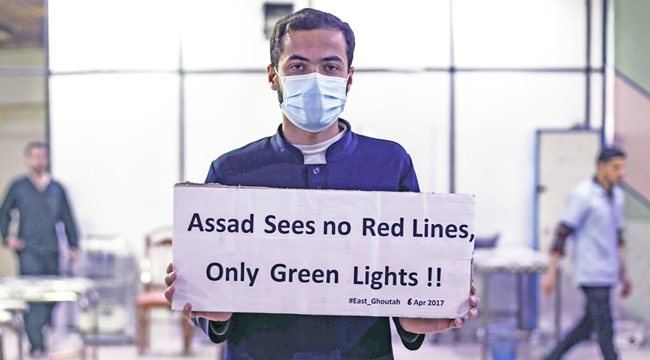
With all that’s been going on in the world the last six months, it’s been easy for certain events to fall by the wayside. The deadly chemical attack in Syria is a good example of this, even though it led to sanctions, a retaliatory airstrike, and could be the event that starts a large(r)-scale conflict. Though believed to be the work of Bashar al-Assad, it’s still not known who was responsible for the attack that killed over 90 people, we now know that the chemical weapon used was sarin gas.
Famously used in a terrorist attack on the Tokyo subway system, sarin gas is more lethal than cyanide and can be inhaled or absorbed through the skin. It’s considered a weapon of mass destruction and was outlawed in the 1990s by a United Nations treaty.
The type of agent used was discovered through an investigation by the international watchdog group Organization for the Prohibition of Chemical Weapons who worked with the UN while looking into the matter, though the joint report has not yet been fully made public.
“I strongly condemn this atrocity, which wholly contradicts the norms enshrined in the Chemical Weapons Convention,” OPCW Director-General Ahmet Uzumcu said in a statement. “The perpetrators of this horrific attack must be held accountable for their crimes.”
The report’s lack of finger-pointing may deepen the divide between the U.S. and Russia on the issue as the two do not agree that Assad was responsible.
“The facts reflect a despicable and highly dangerous record of chemical weapons use by the Assad regime,” the U.S. State Department said in a statement.
Russian Foreign Minister Sergey Lavrov was less direct. “They don’t know how the sarin ended up there, yet tensions have been escalating for all these months,” he said.
Syria joined the OPCW in 2013 (after being blamed for a chemical attack) and disposed of some 1,300 tons of chemical weapons, but it’s never been concluded that all of the country’s chemical arsenal was destroyed.
(via New York Times)
